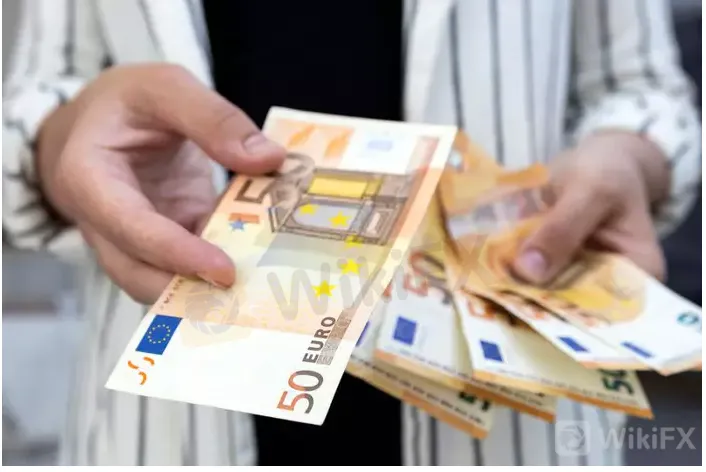简体中文
繁體中文
English
Pусский
日本語
ภาษาไทย
Tiếng Việt
Bahasa Indonesia
Español
हिन्दी
Filippiiniläinen
Français
Deutsch
Português
Türkçe
한국어
العربية
Euro set for best week since May after ECB opts for big hike
Abstract:The euro headed for its best week since May on Friday after the European Central Bank (ECB) raised borrowing costs more than expected overnight in its first rate hike since 2011.

However the single currency was well off Thursdays knee-jerk peak after ECB President Christine Lagarde said that while the monetary authority was moving faster than previously signalled, the terminal rate had not changed.
The central bank was also short on specifics of a new tool aimed at taming peripheral nation bond yields, just as Italian bonds suffer the effects of a collapsed government.
“The details, conditionality and what would justify activation was vague and did little to inspire confidence in light of the Italian political situation,” Tapas Strickland, a markets economist at National Australia Bank, wrote in a note.
He added that the widening spread between Italian and German government bond yields reflected greater political risk and the euro had similarly retreated from its post-ECB meeting peak at $1.0279.
The single currency eased 0.2% on Friday to $1.0205, giving back a little of the previous sessions 0.5% advance, but remained on course for a 1.21% weekly rally.
The dollar index – which measures the greenback against six major peers, with the euro the most heavily weighted – edged 0.08% higher to 106.70, following a 0.36% slide on Thursday. Its on course for a 1.27% drop since last Friday, its first losing week in four.
The buck was also weighed down overnight by a decline in Treasury yields after data showed a slump in factory activity and a rise in applications for unemployment benefits, signs that the economy is already feeling the effects of aggressive Federal Reserve policy tightening, potentially giving the central bank less to do in future.
Japans currency, which is particularly sensitive to changes in U.S. yields, headed for its first winning week since late May.
The dollar was little changed at 137.285 yen, after sliding 0.67% overnight and pulling further away from the 24-year high at 139.38 reached last week.
That was despite the Bank of Japan sticking with ultra easy policy settings on Thursday.
Currencies seen as more sensitive to risk declined on Friday with U.S. stock futures pointing lower, led by a 0.7% drop for Nasdaq eminis as Snapchat owner Snap Inc plunged 25% in extended trading after declining to provide a profit forecast amid “incredibly challenging” conditions.
The Aussie dropped 0.25% to $0.6919, paring a weekly advance to 1.84%, though that would still be its best showing since early March.
Sterling eased 0.14% to $1.19875 on Friday, trimming its gain for the week to 0.98%, the most since late May.

Disclaimer:
The views in this article only represent the author's personal views, and do not constitute investment advice on this platform. This platform does not guarantee the accuracy, completeness and timeliness of the information in the article, and will not be liable for any loss caused by the use of or reliance on the information in the article.
Read more

How to Tell If the Forex Market Is Good to Trade Today?
Wondering if today is a good day to trade forex? Learn how to evaluate market conditions using volatility, session timing, technical clarity, and economic news—without relying on guesswork.

Top Benefits of Forex Cards
Forex cards enable you to make seamless transactions in foreign currencies when travelling abroad. Check out this guide to learn the benefits of forex cards in detail.

Mule Accounts: The Secret Weapon Fake Forex Brokers Use to Dupe Investors
Explore this story where we have highlighted how fake forex brokers use mule accounts to dupe investors.

Fraud Brokers List for July 2025- EXPOSED
Attention investors and traders! If you want to invest in the forex market, be careful not to choose these scam brokers. This warning list is issued by the Financial Conduct Authority.
WikiFX Broker
Latest News
Global stock markets are calling Trump's bluff on tariffs
Trump's tariffs overshadow the pomp and pageantry as Macron meets King Charles
Boeing delivers most airplanes since late 2023 after ramping up 737 Max output
Inflation expectations drift back down to pre-tariff levels, New York Fed survey shows
10 Unlicensed Brokers Exposed – Check Now to Stay Safe!
Exposed: Ibell Markets - A Scam Broker That Does Not Allow Withdrawals
Gold Prices to Fluctuate This Week Amid July 9 Tariff Deadline, Fed Policy
America's Deficit Reckoning: How the U.S. debt spiral could spark a crisis
Treasury yields hold steady as Trump extends tariff deadline
Asia-Pacific markets mostly rise as investors assess Trump's steep tariffs
Currency Calculator



